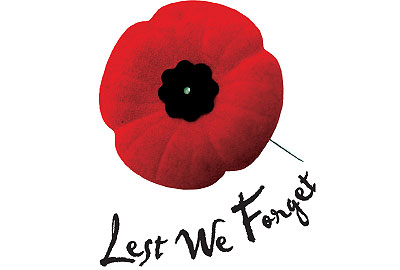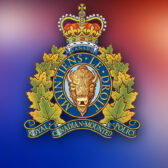Remember by wearing a poppy
As Remembrance Day approaches, British Columbians and people all around the globe wear a red felt poppy as a symbol of remembrance for those who gave their lives in the defence of freedom and to show respect to our veterans.
This year, Remembrance Day is especially poignant, as 2014 marks the 100th anniversary of the start of the First World War and the 75th anniversary of the start of the Second World War. As time passes and fewer veterans are with us, it becomes increasingly important to show that we remember their sacrifice. It’s also a time to show respect for those who continue to fight in wars around the world.
Canadians have a long-standing tradition of donning a red poppy during
the remembrance period from the last Friday in October until the end of
the day on Nov. 11. The poppy is the international symbol of remembrance,
and when you wear a poppy, you honour the war dead and help veterans and
their families.
“When people wear the Poppy in November, it is a universal symbol of
respect,” said Angus Stanfield, president of the Legion in B.C. and Yukon.
“What people often don’t realize is that while we are indeed recognizing veterans from long ago battles who fought and gave their lives, there are others who need to see us wear it – modern-day veterans.
“They are here and so are their families, and they are deserving of our respect,” Stanfield added.
“We wear the poppy for them with even more determination, because
they continue to make sacrifices day in and day out.”
Following the shooting in Ottawa of a Canadian military reservist and the fatal hit-and-run of a veteran in Quebec, some Canadians have been requesting to wear a poppy before the campaign launches on Oct. 31.
Legions welcome them to show their support early, with many branches having poppies available at their location for those who stop by.
However, donations cannot be accepted until the campaign officially
begins on Oct. 31.
Since 1921, the Royal Canadian Legion’s Poppy Campaign has helped provide direct assistance for ex-service people in financial distress, as well as funding for medical appliances and research, home services, care facilities and numerous other purposes.
Wearing the poppy:
- The poppy should always be fastened on clothing on the wearer’s left-hand side, close the heart. This is also true when the weather is poor and outer garments are necessary. Poppies should not be fastened on hats or other objects.
- Questions have been raised as to the appropriateness of using a Canada flag pin or other similar fastener in the center of the poppy. While it is the opinion of the Legion that the poppy, the sacred symbol of remembrance, should not be defaced in any way, the Legion does recognize that it is better to wear a poppy with a Canadian flag in the centre than not to wear one at all.
- While the poppy is normally removed at the end of the day on Nov. 11, many people now place their poppy at the base of the cenotaph at the end of the Remembrance Day ceremony as a sign of respect to veterans.
The history of the poppy as an emblem of fallen soldiers:
- During the Napoleonic Wars, the poppy drew attention as the flower that bloomed over the graves of fallen soldiers.
- In the 20th century, the poppy again was widely noticed after soils in France and Belgium became rich in lime from rubble during the First World War.
- In 1915, John McCrae, a doctor serving with the Canadian Forces Artillery, wrote about this phenomenon in his famous poem, In Flanders Fields.
- In 1920, Madame Anna Guérin of France visited the United States and met Moina Michael, an American woman who wore a poppy year-round to remember the war dead after reading McCrae’s poem. Madame Guérin then sold handmade poppies around Armistice Day to raise money for poor children in war-torn areas of Europe.
- In 1921, the British Legion adopted the poppy as a symbol of
- remembrance and sold poppies as part of its British Poppy Day Appeal, which raised money for poor and disabled veterans.
- The same year, Guérin visited Canada and convinced the Great War Veterans Association (predecessor to the Canadian Legion) to adopt the poppy as a symbol of remembrance to aid in fundraising.
- Today, the Poppy Campaign is one of the Royal Canadian Legion’s most important programs with 18 million poppies and 70,000 wreaths, crosses and sprays being distributed across Canada and overseas annually.

























